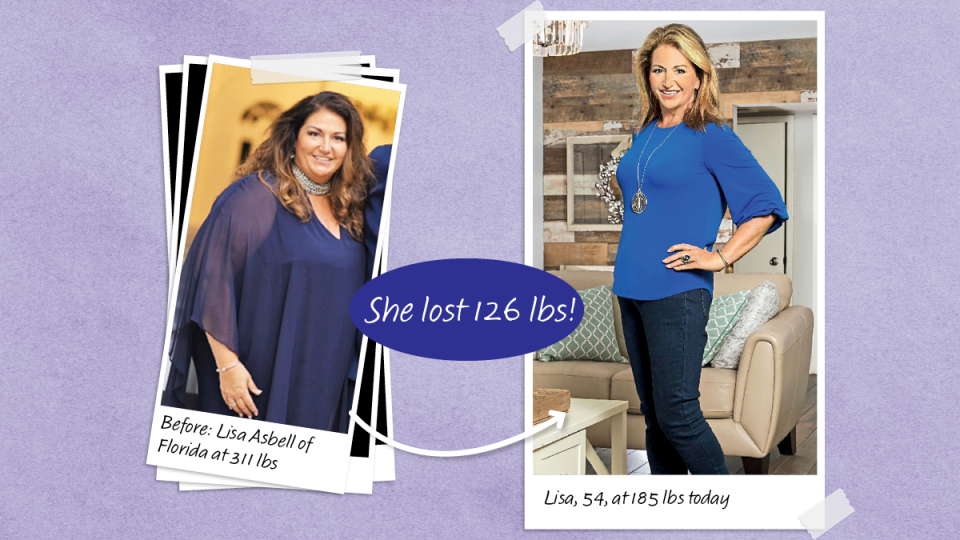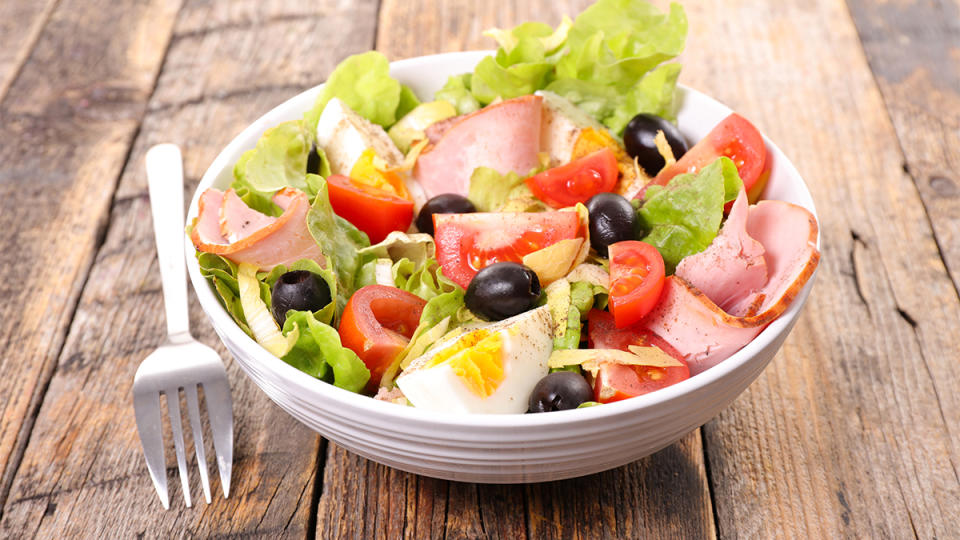Women Over 50 Are Losing 100+ lbs Without Dieting Just By Walking Like *This*
Easy, effective and free aren’t always the first words that come to mind when it comes to weight loss strategies. That is until the trend of 'fasted walking' began garnering buzz! The strategy is all about getting steps in before you eat breakfast – a simple trick that delivers impressive results. In fact, studies show walking first thing on an empty stomach can help crank up metabolism and speed fat burn — for hours. It worked for grandmother Kathie McAtee, who used it to reverse prediabetes and shed 50 pounds. Then there's nurse Lisa Asbell, who dropped 126 pounds — without a strict diet. Read on to discover the science that explains why fasted walking works so well, how it's worked for other women like you and how you can use the strategy to enhance your health and reach your happy weight.
What is fasted walking?
Fasted walking is typically done first thing in the morning, when your body has had the night to burn through its main fuel source, blood sugar, while you were asleep. Before eating and replenishing that sugar, simply head out for a walk. You can do this as part of another trend — intermittent fasting — or not. (Click through to discover the science behind intermittent fasting.)
Without sugar stores to tap into, your body has no choice but to start burning stored fat as fuel, explains fasted exercise expert Jason Fung, MD. The result? Better blood sugar control, a faster metabolism and seemingly effortless weight loss. And it doesn’t matter if you only have time for a super quick fasted walking session. The slimming boost continues long after you sit down.
How fasted walking works
Your body naturally burns blood sugar for energy. When you eat to refuel, your body begins to burn that food to keep you up and moving. Any excess sugar is first stored in the liver as glycogen, and when the liver fills up, we store the rest as fat. Our bodies use the energy in the same order it’s stored — first from food, then stored glycogen in the liver, then stored fat. But every time we eat, we refuel our energy stores. That means your body never gets a chance to power off that stored fat.
However, when you fast overnight, your body uses up your blood sugar and glycogen to keep things humming along while you sleep. Then, when you start fasted walking, your body defaults to burning stored fat to keep you going. “Our bodies have the wonderful ability to adapt to what’s available,” says Dr. Fung, author of The Obesity Code. “When we regularly exercise after our supply of stored blood sugar is depleted, our muscles ‘learn’ how to use fat as energy.”
To start, plan to go at a steady pace for 20 to 60 minutes or use the step-counting feature on your cellphone to aim for 5,000 to 7,000 steps. (Don’t worry if this pace is too much for you: Click through to learn how walking slowly may burn more belly fat in women over 50.)
Why fasted walking increases fat burn
The pre-breakfast stroll jolts your metabolism into action. Indeed, a study conducted in Japan found that exercising on an empty stomach doubles fat burn compared to exercising after a meal. What’s more, British scientists found that, unlike walking after you eat, walking before breakfast has a unique ability to activate various genes linked to effortless weight control. And that helps further reprogram your body to get lean. (Too cold or dreary to walk outdoors? Treadmills work too! Click through for treadmill boost exercise tips to get the most out of your workout.)
The benefits don’t end when your walk does, either. In one study, subjects who exercised before eating ate fewer calories throughout the day but reported the same level of hunger as those who ate more. Separate research also revealed that pre-breakfast walkers set themselves up to burn significantly more fat than their sedentary counterparts.
Plus, the strategy helps train your muscles to burn fat. Once that happens, you can indulge in a treat and your metabolism stays elevated. Dr. Fung adds that stamina also increases nicely because “you’re powered by an almost unlimited energy drawn directly from your fat stores.”
"I felt amazing and just kept losing!"
After losing on keto and maintaining for decades, “I started having too many cheat days and regained a lot of weight,” admits Kathie McAtee. So when a co-worker got lean just by eating his normal foods in a shorter window each day — a form of intermittent fasting — the New Jersey grandmother decided to give it a try, bumping her breakfast to later in the day.
It didn’t go well initially. “I was often hungry, at least in my head,” she recalls. “Honestly, I started walking before my first meal of the day just to distract myself.” And then an amazing thing happened: “Not only did my hunger get much better but some days, I had none at all!”
Pounds began disappearing steadily, even though Kathie opted not to do strict keto again. Her energy shot up, her sleep got sounder, even her prediabetes reversed itself. “I lost more than at any other point in my life — and I just turned 66,” Kathie marvels. “My goal was to drop 30 pounds, but I guess my body didn’t realize. I felt amazing and just kept losing.” (Have back pain when walking? Click through to learn why you’re aching, plus the expert strategies that send lower back pain when walking packing.)
All told, Kathie still goes for a fasted walk most days simply because she loves it. “My pace has gotten pretty energetic. I can go a mile in 16 minutes and often out-walk much younger ladies at the park. I get a real kick out of that,” she says. “And I’m just so proud of myself when I pull on my size-6 jeans!”
And nurse Lisa, 54, lost 126 lbs — without a strict diet

An MRI revealed excess weight was causing Lisa Asbell’s intense knee pain, leaving her stunned. Even at 300 pounds, “my blood work was good, so I told myself I was fine,” admits the Florida nurse, 54. Soul searching followed. “Giving up foods I love had never worked for me, so I decided not do it again.” Instead, Lisa listened to her body and ate until she was just full. For exercise, “I walked as far as I could – and always before breakfast so I wouldn’t get busy and skip it.”
Did it boost her fat burn? Did it ever! She lost a quick 15 pounds without a special diet. Her pain subsided. Now down 126 pounds, Lisa still does fasted walking. “It’s been the best thing I could have done for myself!” (Click through to read more of Lisa's story and learn how women are walking off stubborn fat at any age.)
What to eat after fasted walking
When you finish walking, what you eat is just as important as when for supercharging results. The secret: Go for lots of protein and fewer carbs. Research shows this keeps blood sugar low and slows your shift to “sugar burning." It also helps build more metabolism-boosting muscle. (Click through to learn more on why a morning dose of protein is key for weight loss.)
Is it possible to overeat while using this trendy walking hack? Sure. But it’s less likely to happen, according to Brigham Young University scientists. Their study found that morning exercise triggers biochemical changes that significantly reduce hunger for 24 hours. So you’ll eat less without trying.
Need meal ideas for inspiration? Try one of our favorite protein-rich breakfasts:
Chocolate Milk Bowl

Blitz ? cup nut milk, 2 scoops unsweetened protein powder, ? cup almonds, 2 Tbs. cocoa, stevia and ice to taste. Garnish with low-sugar fruit.
Breakfast Salad

Top a big salad with eggs (any style), a little nitrate-free breakfast meat and a drizzle of olive-oil vinaigrette or your favorite no-sugar-added dressing.
Protein Toast

Toast low-carb bread and spread with cottage cheese; add low-carb toppings like berries or sliced veggies and smoked salmon.
For more on how walking can enhance your health, click through below:
Not Getting Enough Sleep Can Make Walking More Difficult
This article originally appeared in our print magazine, Woman's World.
This content is not a substitute for professional medical advice or diagnosis. Always consult your physician before pursuing any treatment plan.
